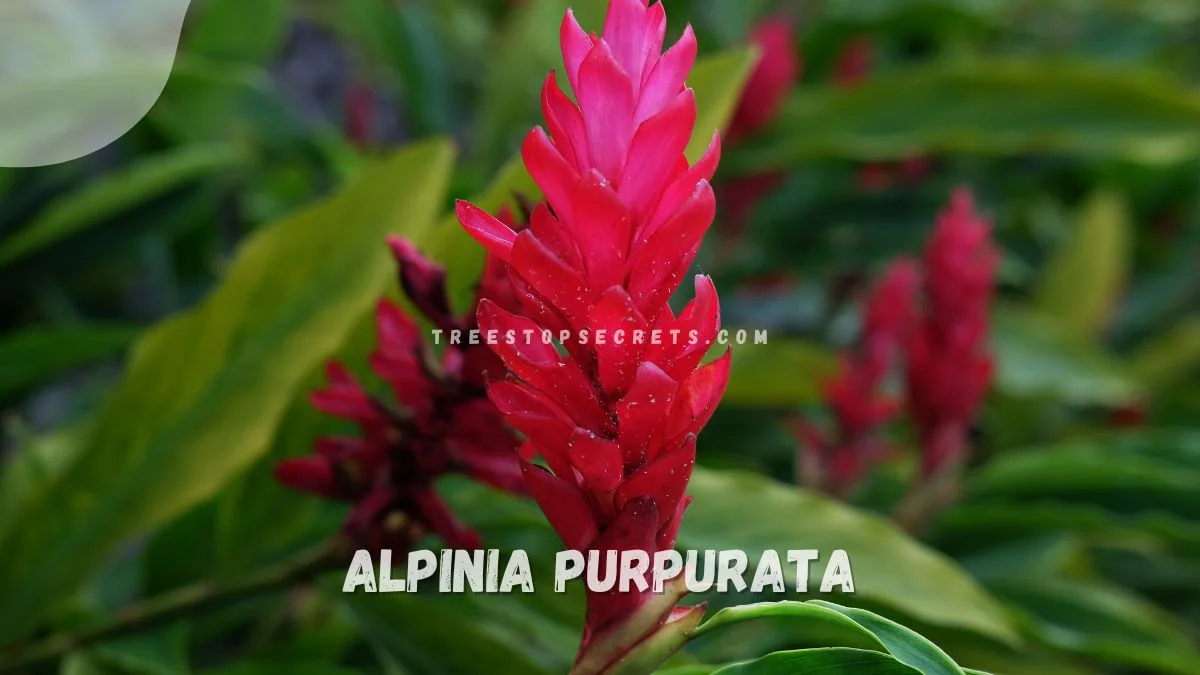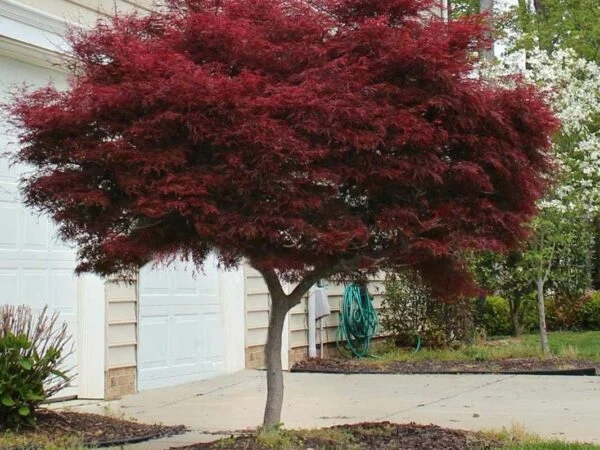Discover the contrasting beauty of the vibrant and delicate ginger flower. From its striking appearance to its subtle fragrance, the ginger flower stands out in any garden. Learn how to cultivate this unique plant with ease and bring a touch of exotic charm to your outdoor space.
Explore the fascinating world of ginger flowers and unlock the secrets to successful growth. Whether you're a seasoned gardener or just starting, cultivating ginger flowers can add a pop of color and elegance to your landscape. Embrace the joy of gardening and elevate your outdoor oasis with the alluring presence of the enchanting ginger flower.
Key Takeaways
- Understand the growth stages of flowering ginger to better care for your plant.
- Prepare the planting area by choosing well-draining soil and a location with partial sunlight.
- When planting flowering ginger, ensure the rhizomes are planted shallowly and spaced adequately.
- Provide essential care such as regular watering, fertilizing, and mulching to promote healthy growth.
- Optimize growth conditions by maintaining consistent moisture levels and protecting the plant from extreme temperatures.
- Consider propagating flowering ginger through division to expand your garden or share with others.
Understanding Flowering Ginger
Types of Ginger
Flowering ginger plants come in various types, including the Hedychium coronarium and Alpinia purpurata. Each type exhibits distinct characteristics, such as the white fragrant flowers of Hedychium coronarium and the vibrant red blooms of Alpinia purpurata. Within the Zingiberaceae family, diversity thrives, showcasing a wide range of colors, sizes, and flowering patterns.
- Types of Flowering Ginger Plants:
- Hedychium coronarium
- Alpinia purpurata
- Characteristics:
- White fragrant flowers (Hedychium coronarium)
- Vibrant red blooms (Alpinia purpurata)
Ideal Growing Conditions
For optimal growth, flowering ginger plants require specific conditions to thrive. Moist, well-drained soil is essential for healthy root development. Part-shade locations or filtered sunlight are ideal for preventing direct exposure that can damage delicate petals. Moreover, maintaining high humidity levels is crucial for promoting robust flower production. Temperature plays a significant role, with a minimum requirement of above 50 degrees Fahrenheit to support healthy growth.
- Growing Conditions for Flowering Ginger Plants:
- Moist, well-drained soil
- Part-shade locations or filtered sun
- Significance of Ideal Conditions:
- Prevents root rot and promotes healthy growth
- Protects delicate petals from direct sunlight
Preparing for Planting
Choosing the Right Soil
Gardeners prefer organically rich soil for planting ginger flowers. The soil should be moist and well-draining to promote healthy growth. It is crucial to avoid cold, wet soil to prevent root rot, which can be detrimental to the plant's health.
The pH level of the soil plays a significant role in the growth of ginger plants. It is essential to maintain near-neutral to slightly acidic pH levels for optimal development. This ensures that the plant can absorb essential nutrients efficiently from the soil.
In colder climates, the risk of root rot increases if the soil is not well-draining. Therefore, gardeners should pay attention to the soil quality and drainage to prevent waterlogging, especially during rainy seasons.
Light and Location
Filtered light is beneficial for the growth of ginger plants. It helps in photosynthesis and overall plant health. Ginger plants thrive in part-shade locations or under filtered sunlight, making them ideal choices for gardens with varying light conditions.
Part-shade locations provide just the right amount of light for flowering ginger plants to flourish. They ensure that the plant receives adequate sunlight without being exposed to harsh direct sunlight, which can sometimes damage the foliage.
The amount of light a ginger plant receives directly impacts its growth and flowering patterns. By placing ginger plants in areas with filtered sunlight, gardeners can encourage robust foliage and vibrant blooms throughout the year.
Planting Flowering Ginger
Seed Germination
Seed germination for ginger plants involves placing the seeds in a suitable environment. The process begins with selecting healthy ginger seeds, typically the basal flowering ginger variety. These seeds are then planted in a well-draining pot filled with a mix of soil and compost.
To ensure successful germination, it is essential to maintain warm and moist conditions. Keep the soil consistently moist but not waterlogged to prevent rotting. Place the pot in a warm location with indirect sunlight. Within 2-4 weeks, you should start seeing tiny shoots emerging from the soil, indicating successful seed germination.
Potting Techniques
When potting ginger plants, choose a container that provides ample space for root growth. Opt for a well-draining pot to prevent waterlogging, which can lead to root rot. The pot size is crucial for the plant's growth; select a container that allows the roots to spread out comfortably.
Proper potting techniques involve planting the ginger rhizome horizontally in the soil, ensuring that the buds are facing up. Cover the rhizome with a thin layer of soil and water thoroughly. Place the pot in a warm area with indirect sunlight and maintain consistent moisture levels in the soil.
Essential Care Tips
Watering Needs
Ginger plants require consistent watering to thrive. During the growing season, water them regularly to keep the soil moist. Make sure to water deeply to reach the plant's roots.
In summer, when the weather is hot, increase the frequency of watering to prevent the soil from drying out. Deep watering is crucial as it encourages strong root development and overall plant health.
Fertilizing Practices
When it comes to fertilizing ginger plants, establish a feeding schedule to provide essential nutrients for growth. Regular fertilization is key to ensuring healthy and vibrant flowering ginger plants.
Fertilizers play a significant role in enhancing ginger plant growth by supplying nutrients that may be lacking in the soil. Choose a balanced fertilizer to promote robust foliage and beautiful flowers.
Optimizing Growth Conditions
Temperature and Humidity
Ginger plants thrive in warm temperatures around 77°F (25°C) to 86°F (30°C), promoting their growth and development. Consistent warmth is crucial for ginger plants to flourish and produce healthy flowers.
High humidity levels, ideally between 50% to 60%, are essential for ginger plants to grow optimally. Moist air helps maintain the plant's hydration levels, supporting its overall health and vigor.
Temperature plays a vital role in the flowering process of ginger plants. Cooler temperatures can delay or inhibit flowering, while warmer conditions stimulate flower production, leading to a bountiful display of blooms.
Pruning Basics
Pruning flowering ginger plants involves removing dead or damaged foliage to encourage new growth. It is best done in early spring before the growing season begins, allowing the plant to focus its energy on producing fresh shoots.
Timing is crucial when pruning ginger plants. After blooming, trimming back old stems promotes the emergence of new shoots, ensuring a continuous cycle of growth and flowering.
Pruning offers several benefits for ginger plant health, including enhanced air circulation, reduced risk of disease, and improved aesthetics. Regular trimming also helps maintain the plant's shape and vitality.
Propagating Flowering Ginger
From Seeds
To propagate flowering ginger, start by planting seeds, ensuring they are fresh for optimal germination. Keep the soil moist but not waterlogged to encourage sprouting. Place the seeds in a warm, sunny spot for successful growth.
When planting ginger seeds, bury them shallowly, about half an inch deep in the soil. Ensure the soil is well-draining to prevent waterlogging, which can lead to rotting. Maintain consistent moisture levels to support seed germination.
Advantages of growing ginger from seeds include the ability to select healthy seeds for planting. It allows for genetic diversity, potentially leading to more robust plants with unique characteristics. Starting from seeds is cost-effective compared to purchasing established plants.
Potting and Repotting
For potting ginger plants, use a well-draining pot filled with rich, loamy soil. Ensure the pot has drainage holes to prevent water accumulation. Place the pot in a warm and sunny location for optimal growth conditions.
When repotting ginger plants, look for roots growing out of the drainage holes, indicating the need for a larger pot. Check for crowded roots or stunted growth as signs that repotting is necessary. Use fresh soil when repotting to provide nutrients for continued growth.
The importance of well-draining pots for ginger cannot be overstated. It prevents waterlogging, which can lead to root rot and plant decline. Good drainage promotes healthy root development, essential for nutrient absorption and overall plant health.
- Bulleted list
- Select fresh seeds for planting
- Maintain consistent moisture levels
- Ensure well-draining soil for successful germination
Overcoming Challenges
Overwintering Strategies
During winter, protect ginger plants by mulching with straw or leaves to insulate them from freezing temperatures. Covering the plants with a blanket can also help maintain warmth. To further safeguard against the cold, move potted ginger indoors or to a warmer spot.
Overwintering is crucial as exposure to frost can damage ginger plants severely. By implementing these strategies, gardeners can ensure the survival and health of their ginger plants through the colder months.
- Mulch with straw or leaves
- Cover plants with a blanket
- Move potted ginger indoors
Pest and Disease Prevention
Common pests like aphids and spider mites can infest ginger plants, affecting their growth and vitality. Regularly inspecting plants for signs of infestation is key to early detection. Utilize organic pesticides or neem oil to combat pests effectively.
Diseases such as root rot can also pose a threat to ginger plants. Preventive measures include ensuring proper drainage and avoiding overwatering. Promptly treating any signs of disease can safeguard the overall health of the plants.
- Inspect plants regularly
- Use organic pesticides
- Ensure proper drainage
Encouraging Blooms
Getting Ginger to Flower
Ginger plants require specific conditions to bloom successfully. Factors like temperature, light, and soil quality influence the flowering process. To encourage ginger plants to bloom, ensure they receive adequate sunlight. Maintain a consistent watering schedule to keep the soil moist.
To promote flowering in ginger plants, provide a warm environment with temperatures ranging between 75-85°F. Avoid exposing the plants to drafts or sudden temperature changes, as this can hinder the blooming process. Adequate humidity levels are also essential for encouraging ginger flowers to bloom.
Care practices play a crucial role in promoting flowering in ginger plants. Regularly fertilize the plants with a balanced fertilizer to provide essential nutrients for blooming. Prune any dead or damaged foliage to redirect energy towards flower production. Proper watering is key; avoid overwatering as it can lead to root rot and prevent flowers from blooming.
- Provide adequate sunlight
- Maintain consistent watering
- Ensure warm temperatures
- Avoid sudden temperature changes
- Maintain proper humidity levels
- Regularly fertilize with a balanced fertilizer
- Prune dead or damaged foliage
- Avoid overwatering
Final Remarks
You've learned the ins and outs of planting and caring for flowering ginger. By understanding its needs, preparing the soil, and providing proper care, you set the stage for beautiful blooms. Remember to monitor growth conditions, propagate when necessary, and tackle challenges head-on to ensure your flowering ginger thrives.
Now it's time to roll up your sleeves and get planting! Put your newfound knowledge into action and watch as your flowering ginger transforms your garden into a vibrant oasis. Share your success with fellow gardening enthusiasts and continue to nurture your green thumb. Happy planting!
Frequently Asked Questions
Is Flowering Ginger easy to care for?
Yes, Flowering Ginger is relatively easy to care for. It requires regular watering, well-draining soil, and indirect sunlight. Pruning dead leaves and providing occasional fertilization can help maintain its health and appearance.
When is the best time to plant Flowering Ginger?
The best time to plant Flowering Ginger is in the spring or early summer when the temperatures are warmer. This allows the plant to establish a strong root system before the colder months. Ensure the soil is consistently moist during this period.
How can I encourage blooming in Flowering Ginger?
To encourage blooming in Flowering Ginger, provide it with adequate sunlight, water, and nutrients. Avoid over-fertilizing as it can hinder flowering. Maintaining a consistent watering schedule and ensuring proper drainage can promote healthy blooms.
Can Flowering Ginger be propagated easily?
Yes, Flowering Ginger can be propagated easily through division. Simply separate the rhizomes of an established plant and replant them in suitable soil. Ensure each division has sufficient roots and shoots for successful propagation.
What are common challenges when growing Flowering Ginger?
Common challenges when growing Flowering Ginger include root rot due to overwatering, lack of flowering caused by insufficient sunlight or nutrients, and pest infestations such as spider mites. Regularly inspect your plants for signs of these issues and take appropriate measures promptly.
Image Source: Paid image from CANVA





